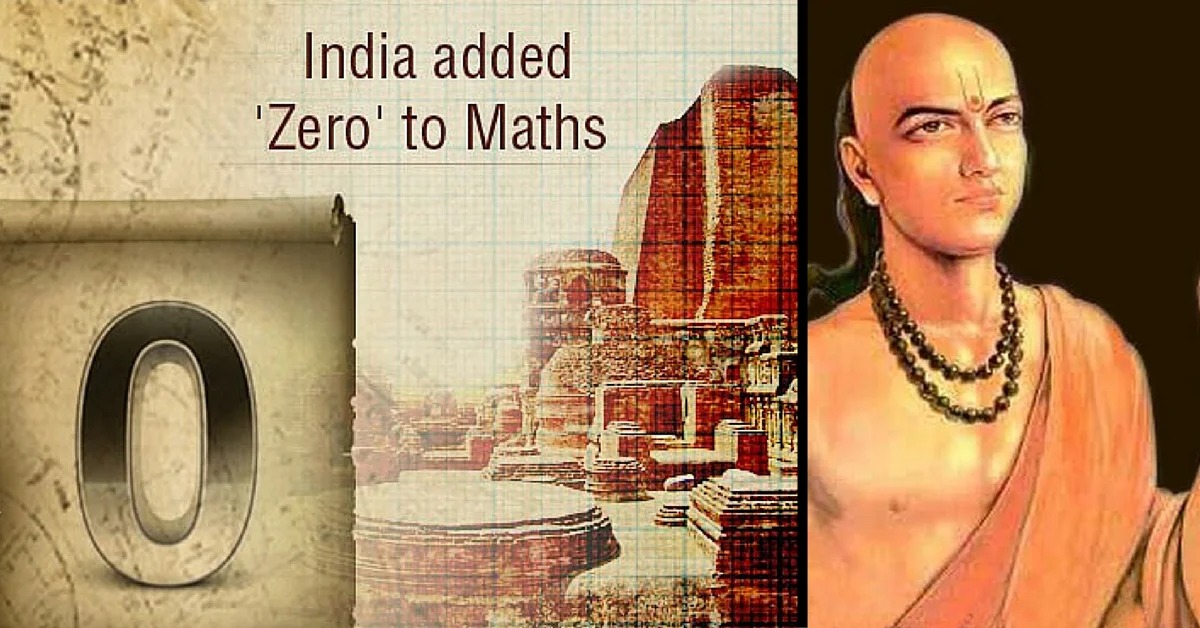Context-
India has a rich intellectual heritage that spans millennia. It is as old as the Ṛgvedic Period, during which Indian civilization laid the foundation for advancements in diverse scientific domains. The Vedas, Itihāsas, Brāhmaṇas, Āraṇyakas, Upanishads, and Purāṇas, not only delved into philosophical and spiritual realms but also contained profound insights into mathematics, astronomy, medicine, and more
Ancient Indian Contributions to Mathematics
The mathematical prowess of ancient India stands as a testament to its intellectual heritage. From the development of the decimal system to profound insights into algebra and geometry, Indian mathematicians made significant contributions that laid the foundation for modern mathematical concepts.
Decimal System and Zero
The decimal system, with its revolutionary use of zero as a numeral and a placeholder, was a landmark discovery that influenced global mathematical understanding. Scholars like Brahmagupta and Aryabhata played pivotal roles in elucidating the rules of arithmetic and defining the properties of zero.
Brahmagupta's elucidation on arithmetic using zero and Aryabhata's solutions to quadratic equations showcased India's mathematical sophistication. The Brahmi numerals, which evolved into the Hindu-Arabic numeral system, remain a testament to India's enduring mathematical legacy.
Algebra and Trigonometry
In addition to advancements in arithmetic, Indian mathematicians excelled in algebra and trigonometry. Aryabhata's Āryabhatīya presented solutions to quadratic equations, while trigonometric functions were introduced in the context of astronomy. Baudhāyana's approximation of pi and the discovery of the Pythagorean Theorem in the Baudhāyana Śulba Sūtra underscored India's mathematical acumen.
The infinite series expansions for trigonometric functions, discovered by Mādhava of Saṃgama Grāma and the Kerala School mathematicians, laid the groundwork for calculus. These contributions, transmitted to Europe by Jesuit missionaries, shaped the development of mathematical thought worldwide.
Ancient Indian Insights into Astronomy
Ancient Indian astronomers made remarkable strides in understanding celestial phenomena and developing precise mathematical models for planetary motion and timekeeping.
Heliocentric Model and Celestial Coordinates
Āryabhata's proposal of a heliocentric model challenged prevailing cosmological beliefs, while the Siddhāntas provided mathematical frameworks for calculating planetary positions and eclipses. The Indian calendar system, Pañchāṅga, offered accurate measurements of celestial events and festivals, reflecting India's mastery of timekeeping.
Ecliptic coordinates and the division of the celestial sphere into lunar mansions showcased India's sophisticated astronomical understanding. The Surya Siddhanta's description of celestial longitude and latitude highlighted India's meticulous approach to astronomical observation and calculation.
Impact and Influence
Indian astronomy's impact extended far beyond its borders, influencing Islamic astronomy and later European astronomical traditions. Scholars like Al-Biruni incorporated Indian astronomical methods into Islamic scholarship, fostering cross-cultural exchange and the dissemination of Indian astronomical knowledge.
Ancient Indian Contributions to Physics and Metallurgy
The foundational principles of physics and metallurgy articulated by ancient Indian scholars demonstrate their profound understanding of natural phenomena and materials science.
Insights into Physical Phenomena
Early insights into Newtonian laws of motion found in the Vaiśeṣika Sūtra and Bhaskara II's recognition of gravity predated Western formulations of these principles. The Surya Siddhantha's discussion of optics and fluid dynamics provided valuable insights into the nature of light and the behavior of fluids.
The concept of atoms in early Indian philosophical texts laid the groundwork for the development of atomic theory in Europe. Vedantic philosophy's parallels with Quantum Physics underscored India's philosophical contributions to modern scientific discourse.
Metallurgical Expertise
India's mastery of metallurgy is evident in its rich tradition of metalworking and alloy production. The iron pillar in Delhi and the meticulous craftsmanship of ancient Indian artisans reflect India's advanced metallurgical knowledge.
Texts like the Artha Śastra detailed methods for alloying metals and testing metal purity, essential for ensuring the quality of metal products. Bronze and brass alloys played crucial roles in sculpture, coinage, and tool manufacturing, showcasing India's metallurgical innovation.
Ancient Indian Insights into Medicine and Biology
The ancient Indian system of medicine, Ayurveda, and the profound understanding of biology exhibited in ancient texts highlight India's contributions to the field of healthcare and life sciences.
Advancements in Medicine
The Suśruta Samhita stands as a comprehensive treatise on medicine and surgery, detailing surgical procedures, anatomical knowledge, and principles of hygiene. Suśruta's techniques for plastic surgery and cataract removal demonstrate India's advanced medical practices.
Ancient Indian physicians recognized the importance of pain management during surgical procedures and emphasized cleanliness and sterilization techniques to prevent infections. Ayurvedic pharmacopoeia and taxonomic classifications of living organisms showcased India's holistic approach to healthcare.
Biological Understanding
Ancient Indian texts like the Ṛgveda and Nighantu documented the medicinal properties of plants and classified living organisms based on their characteristics. Insights into embryology, zoology, and entomology found in ancient texts underscored India's comprehensive understanding of biological sciences.
The Artha Śastra discussed wildlife management and pest control, reflecting India's practical approach to environmental conservation and agricultural sustainability.
Conclusion
India's ancient scientific heritage encompasses a vast array of disciplines, from mathematics and astronomy to physics, metallurgy, medicine, and biology. The profound insights and innovative discoveries made by ancient Indian scholars continue to resonate in modern scientific discourse.
Efforts to reclaim and integrate India's ancient scientific knowledge into contemporary education and technological innovation are essential for fostering a deeper appreciation of India's intellectual legacy and inspiring future generations to explore new frontiers in science and technology. Platforms like Dharma Digital, alongside advancements in linguistic and computational tools, serve as catalysts for preserving and revitalizing India's ancient scientific traditions in the digital age. By embracing and building upon this rich heritage, India can chart a course toward continued scientific excellence and cultural resurgence.
|
Probable questions for UPSC Mains Exam- 1. Discuss the contributions of ancient Indian mathematicians to the development of the decimal system and zero, highlighting the significance of Brahmagupta and Aryabhata's work. (10 Marks, 150 Words) 2. Evaluate the impact of ancient Indian astronomy on global scientific thought, emphasizing the heliocentric model proposed by Āryabhata and the advancements in celestial coordinates and timekeeping. (15 Marks, 250 Words) |
Source- India Foundation







